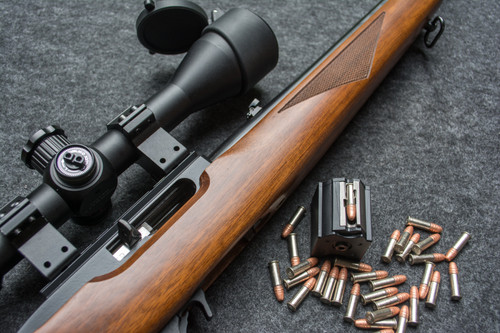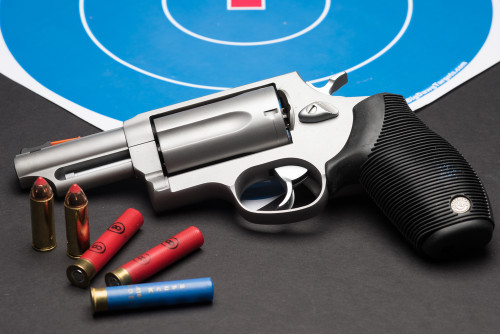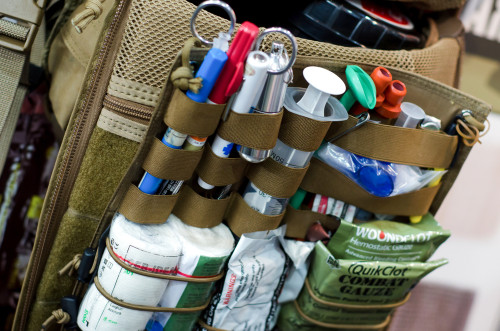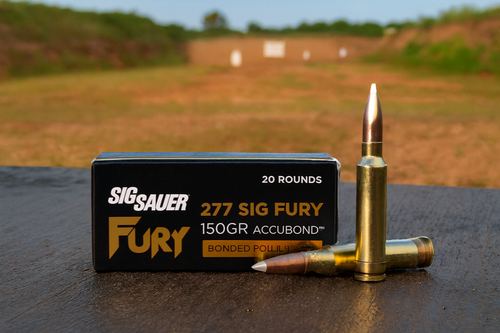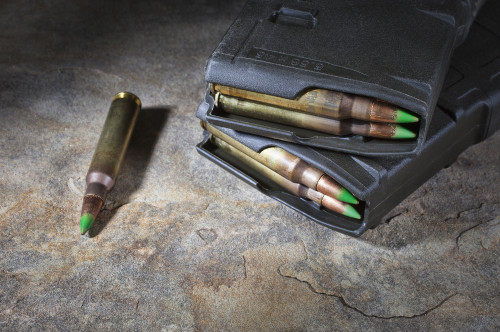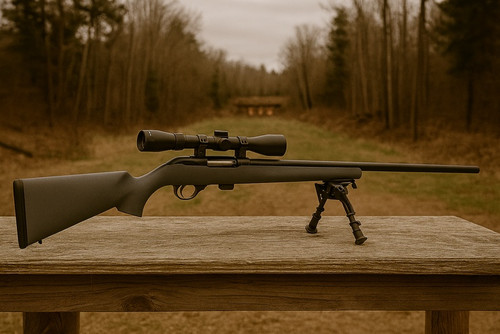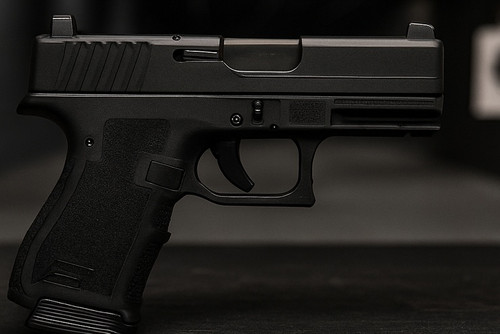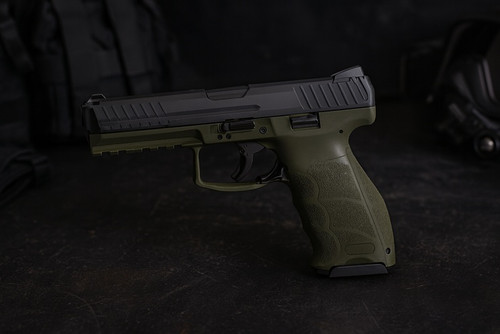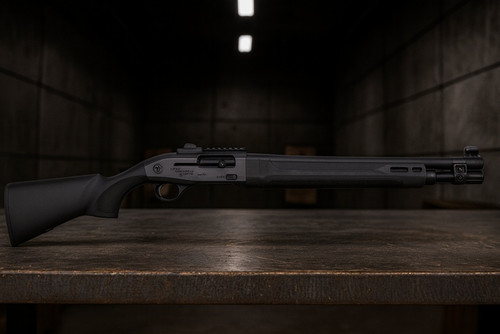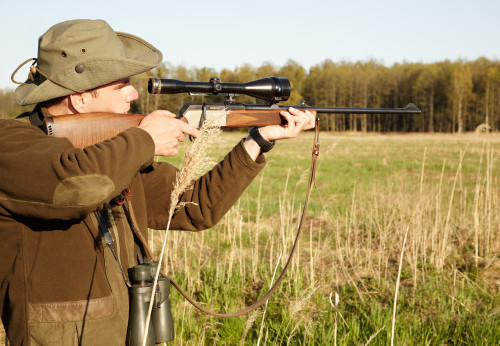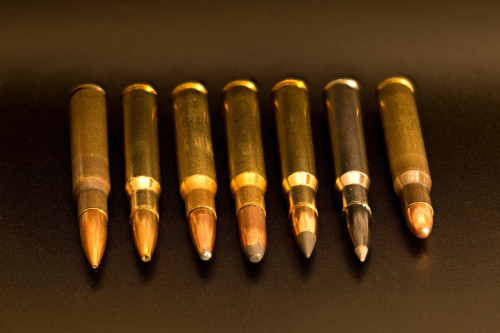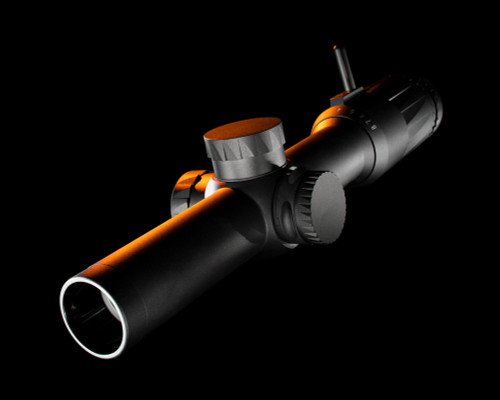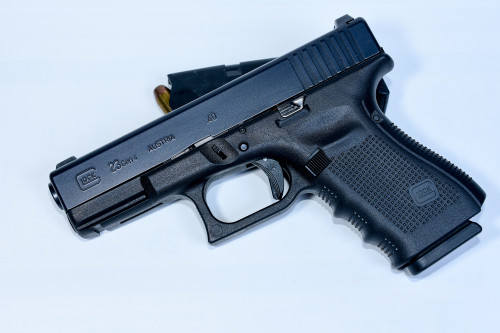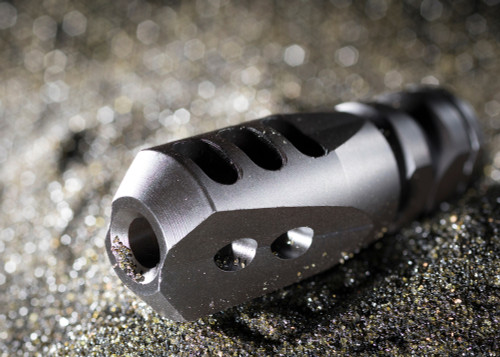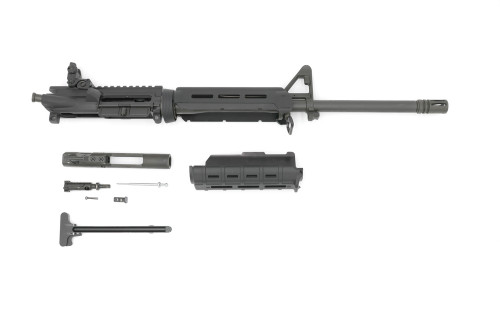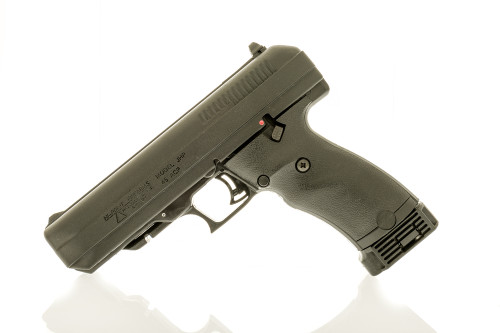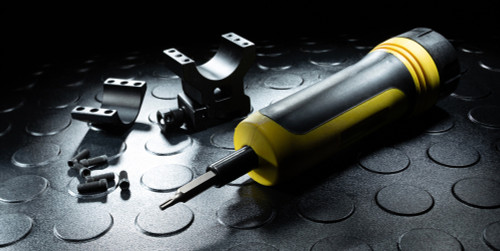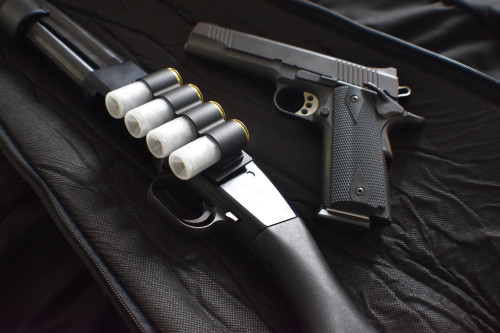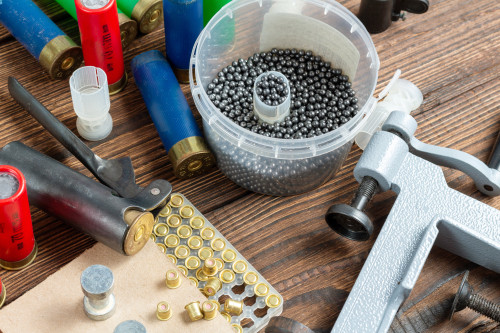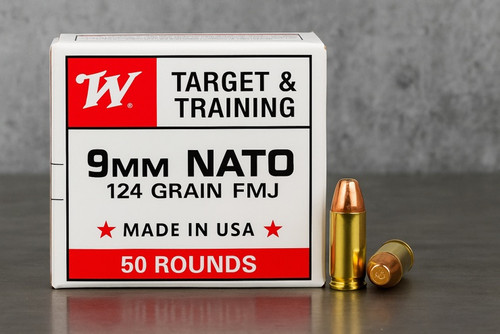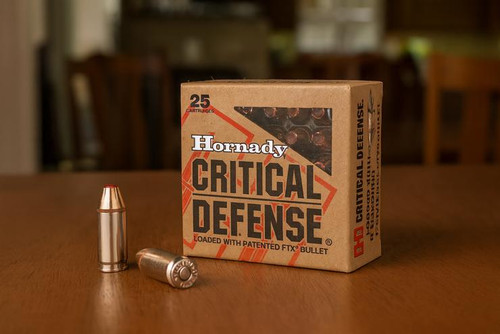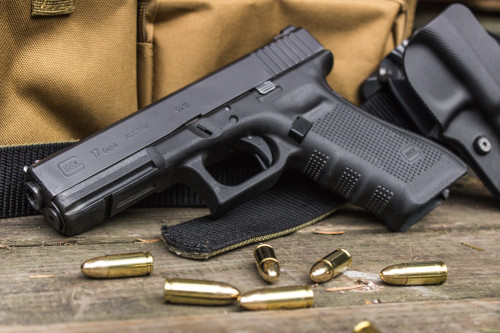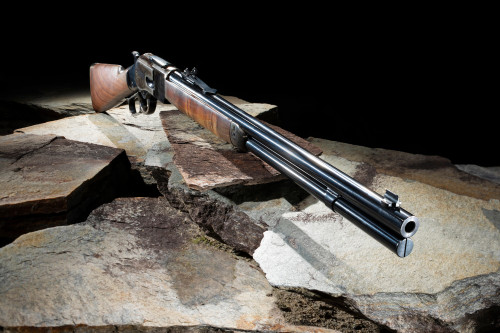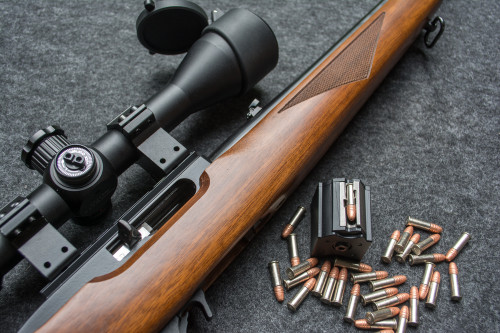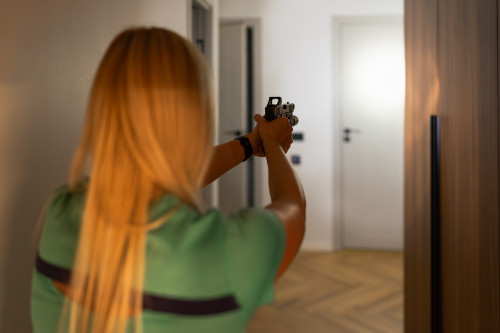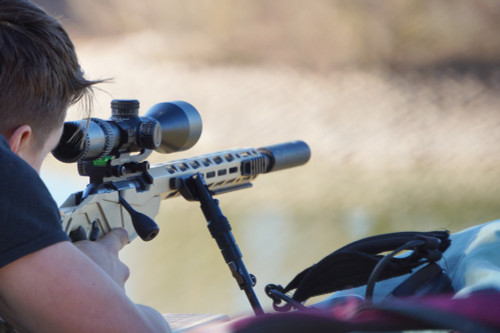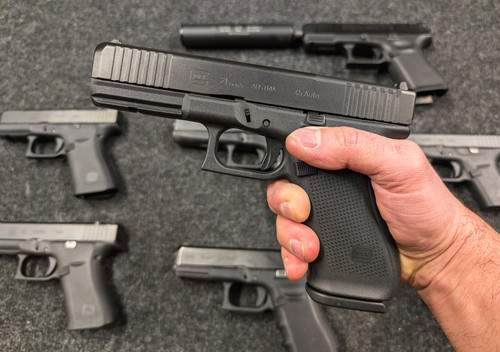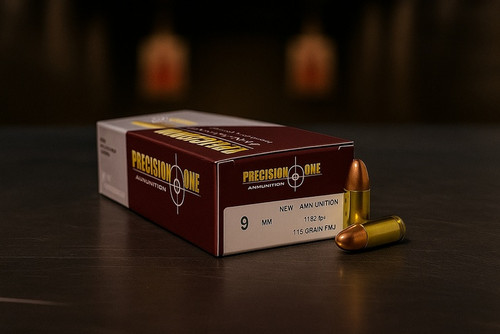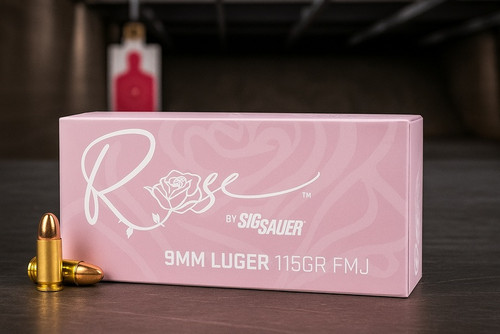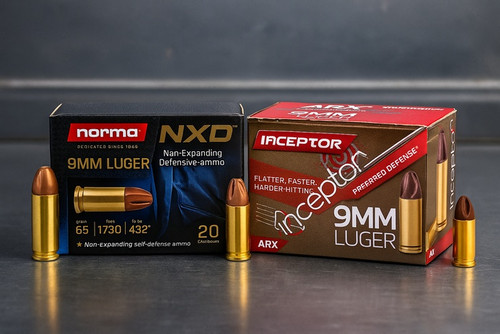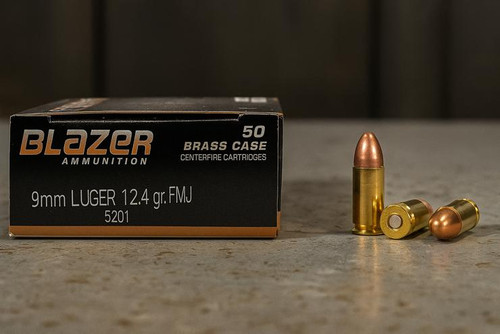You've probably heard someone at the range ask to borrow a "clip" when they needed a magazine. This mix-up happens all the time in action movies too. Many people use these terms like they mean the same thing. To casual observers, the difference might seem tiny and not worth noting. But gun enthusiasts know these terms describe completely different equipment.
The truth matters when talking about firearms and how they work. Magazines and clips serve separate functions in loading and feeding ammunition. Knowing the right terms shows you understand more than just how to pull the trigger. It demonstrates real knowledge about how firearms actually operate and function during use.
Clip vs Magazine: Quick Definition
Here's the simplest way to understand the difference:
- Magazine: A spring-loaded device that feeds ammunition into the firearm's chamber
- Clip: A device used to load ammunition into a magazine
In Short: A clip loads the magazine; the magazine loads the gun.
The key mechanical difference lies in their construction. Magazines have springs that push cartridges up to be fed into the chamber. Clips don't have springs—they're simply metal devices that hold rounds together.
Why Do People Mix Them Up?

Movies and TV shows constantly get this wrong. How many times have you heard an action hero yell "I need another clip!" when reaching for what's clearly a magazine? These media portrayals cement incorrect terminology in our minds.
History plays a big role too. During World War II, the M1 Garand rifle used an en bloc clip that soldiers would load into the internal magazine. When veterans returned home, many continued calling everything that held ammunition a "clip." This habit passed to future generations, spreading the confusion.
News reporters and politicians make the same mistake when talking about guns. Their errors reach millions of viewers each day. Most people never hear the correct terms used properly in public discussions about firearms.
This problem happens with other gun terms too. Many people say "bullets" when talking about complete cartridges. The bullet is just the metal tip that flies toward the target. Real gun enthusiasts care about these details for good reason.
Why It Matters to Gun Owners
Using the right terms shows you understand how your equipment works. It's like a chef knowing the difference between dicing and mincing. Proper knowledge reflects your level of expertise.
Clear language prevents mistakes at the gun shop. Ask for a clip when you need a magazine, and you'll leave empty-handed. In training situations, exact wording helps everyone stay on the same page during important instructions.
Correct terminology shows you take gun ownership seriously. People who know their equipment tend to handle it more safely. Knowledge and responsibility go hand in hand when dealing with firearms.
Think about medical advice from someone who mixes up basic terms. You probably wouldn't trust them with your health. Gun terminology works the same way among serious shooters and instructors.
Types of Gun Magazines
Let's break down the main types of magazines you'll encounter:
1. Box Magazines

Box magazines are exactly what they sound like—box-shaped containers that hold ammunition. They come in two main varieties:
Detachable Box Magazines
These can be removed from the firearm for loading or replacement. Most modern semi-automatic pistols and rifles like the AR-15 use detachable box magazines. The popular Pmag from Magpul is a perfect example of a detachable polymer magazine.
Internal Box Magazines
These are built into the firearm and can't be removed (without disassembly). Many bolt-action rifles feature internal box magazines. They're loaded from the top, often with the help of stripper clips.
2. Tubular Magazines

Instead of a box shape, tubular magazines use a spring-loaded tube to hold rounds in a line. You'll find these in:
- Lever-action rifles like the Winchester Model 94
- Many .22LR rifles such as the Glenfield Model 60
- Pump-action and semi-automatic shotguns
Rounds stack one behind another in the tube, usually located under the barrel. The spring pushes rounds back toward the action for loading.
Types of Clips
Now let's look at the different types of clips you might encounter:
1. Stripper Clip

The most common type is the stripper clip—a flat piece of metal that holds cartridges in a single row. To use one:
- Position the clip on top of the magazine
- Push the rounds down into the magazine
- Remove the empty clip
Stripper clips make loading internal magazines much faster. Military rifles like the Mosin-Nagant use stripper clips. Modern accessories like the StripLULA let you use stripper clips to load detachable AR-15 magazines too.
2. En Bloc Clip

One of the most famous uses of the en bloc clip was in the M1 Garand rifle during World War II. If you want to dive deeper into this iconic firearm, check out our history of the M1 Garand and its evolution.
With an en bloc clip:
- The entire clip loads into the rifle's internal magazine
- Rounds feed from the clip into the chamber
- After the last round fires, the empty clip ejects with a distinctive "ping" sound
This "ping" became legendary during WWII, as it signaled to enemies that a soldier's rifle was empty—but also told fellow soldiers nearby that their comrade needed to reload.
3. Moon Clip

Moon clips stand out because they work with revolvers instead of magazine-fed guns. These round metal clips do several important jobs:
- Hold rounds in a circle matching the revolver's cylinder pattern
- Allow multiple rounds to be loaded or ejected at once
- Stay in the gun during firing
Full moon clips carry enough rounds to fill all chambers in your revolver. Half moon clips hold just three rounds for a six-shot revolver. These tools really help with revolvers that shoot auto-pistol bullets like .45 ACP. Such bullets lack the rim needed for easy extraction from revolvers.
Speedloaders offer a newer option compared to moon clips. They position your bullets in the right pattern for quick loading. Unlike moon clips, speedloaders don't remain in the gun after loading the ammunition.
Examples of Guns That Use Clips
Let's look at some famous firearms that actually use clips:
M1 Garand - This WWII-era rifle uses en bloc clips. When soldiers fired the last round, the clip ejected with that famous "ping" sound.
Mosin-Nagant - This Russian bolt-action rifle uses stripper clips to quickly load its internal magazine.
SKS - This semi-automatic rifle uses stripper clips to load its fixed 10-round magazine.
Revolvers with Moon Clips - Some revolvers, especially those chambered for rimless cartridges like .45 ACP, use moon clips to hold ammunition.
Most modern firearms—particularly semi-automatic handguns and rifles—use detachable magazines, not clips. If you own a modern firearm, chances are you're using magazines.
The Magazine vs Clip Debate: Online and Real-World Reactions

Ask any gun store employee about their experience with the magazine/clip confusion. You'll likely hear stories of polite corrections and eye-rolling moments.
Online, the debate gets heated. Gun forums and social media overflow with "Actually, that's a MAGAZINE, not a clip" comments. The correction has become so common it's practically a meme in firearm communities.
Some gun owners take offense at being corrected, but others appreciate learning the proper terminology. The key is how the correction happens. There's a difference between helpfully educating someone and making them feel stupid.
Remember that everyone starts somewhere. The person using the wrong term might be new to firearms or just repeating what they've heard from others.
At gun ranges, you might hear veterans using "clip" out of habit from their military days. Some respect this as historical usage rather than correcting them.
How to Remember the Difference
Need a simple way to keep these terms straight? Try these memory aids:
- Magazines always have springs, but clips don't. Springs push bullets upward inside a magazine. No spring means you're looking at a clip.
- Reading magazines hold many articles, just like gun magazines hold many bullets. Clips act more like paper clips that just hold things together.
- Visualize the shapes if you are trying to tell them apart. Magazines look like boxes or tubes. Clips appear as flat metal strips or small rings.
You can also watch some videos showing both in action. A picture is worth a thousand words, but seeing the mechanical difference at work makes the distinction crystal clear.
Final Thoughts: When in Doubt, Say 'Magazine'
Here's a simple tip: most modern guns use magazines, not clips. If you're not sure which word to use, just say "magazine" and you'll usually be right.
Knowing the real difference makes you smarter about guns. It shows others that you take gun ownership seriously and understand how your gear works.
Gun terms might seem picky to some people, but exact words matter in the gun world. A chef knows the difference between dicing and slicing. Musicians can tell apart a violin from a fiddle. Gun owners should know their equipment just as well.
Just remember this: a magazine feeds the gun, a clip feeds the magazine. Once you know this, you'll talk about guns with more confidence in any discussion.
Frequently Asked Questions
Can I use stripper clips with any magazine?
No. Most newer detachable magazines don't work with stripper clips directly. Special tools like the StripLULA help you use stripper clips with AR-15 magazines and similar types.
Do any modern firearms still use clips instead of detachable magazines?
Very few. Most new guns use detachable magazines now. Some bolt-action rifles with built-in magazines can still use stripper clips, but detachable magazines have mostly taken over.
If someone asks me for a "clip" but it means a magazine, should I correct them?
It depends. In casual talk, you might just hand them a magazine. In a teaching setting, a friendly correction can help them learn without making them feel bad.
Are moon clips necessary for all revolvers?
No. Most revolvers that shoot rimmed bullets (like .38 Special or .357 Magnum) don't need moon clips. These clips are mainly for auto-pistol bullets like 9mm or .45 ACP when used in revolvers.
Why did the military use clips instead of detachable magazines in older rifles?
Early clips were simpler and cheaper to make. They worked better in rough battlefield conditions. As making methods got better, detachable magazines became more common and eventually standard.
Can I convert my firearm to use a different loading system?
It depends on your gun. Some have aftermarket parts for conversion. Many guns are built for just one loading system. Always ask a good gunsmith before changing anything.



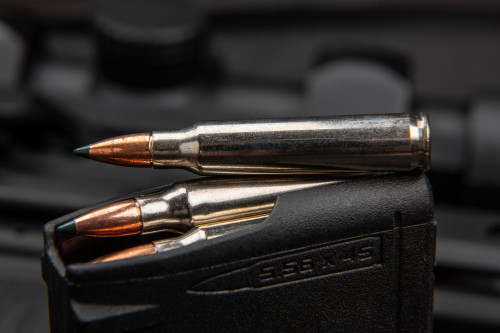
 Pro Armory Editorial Team
Pro Armory Editorial Team







